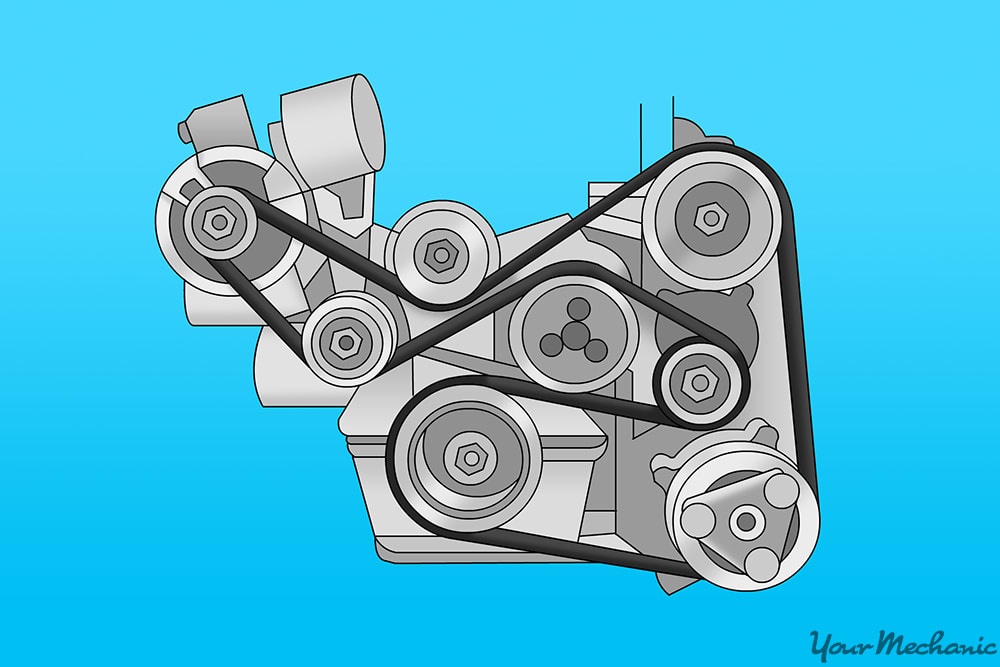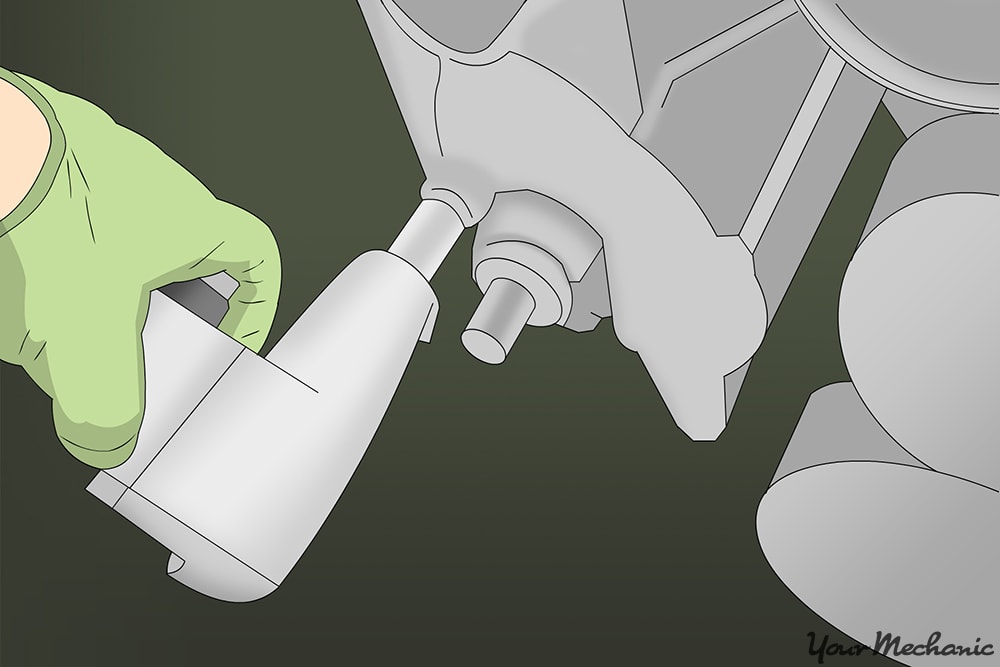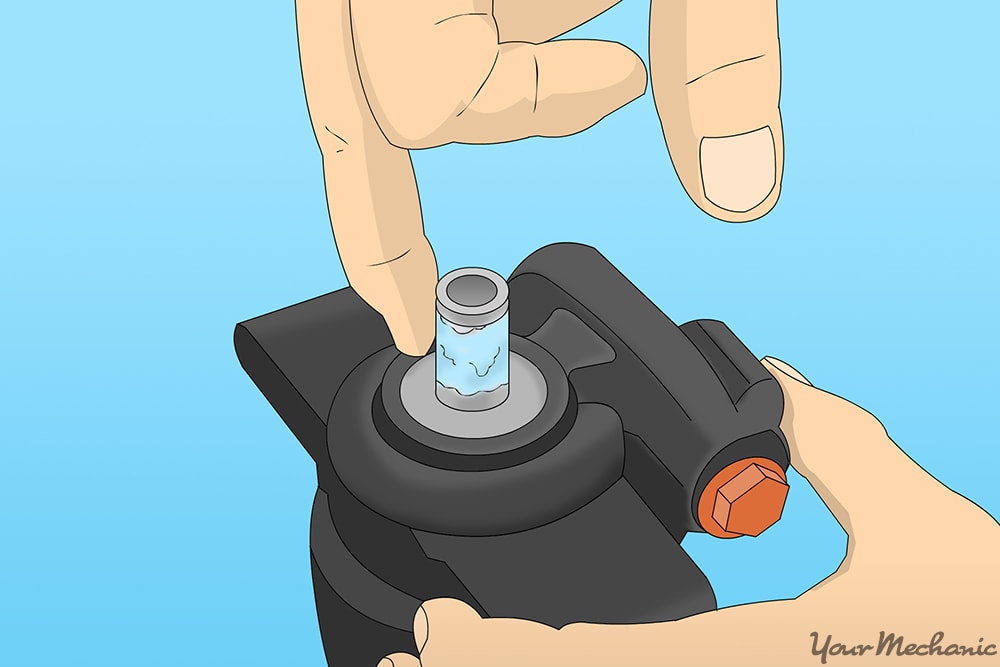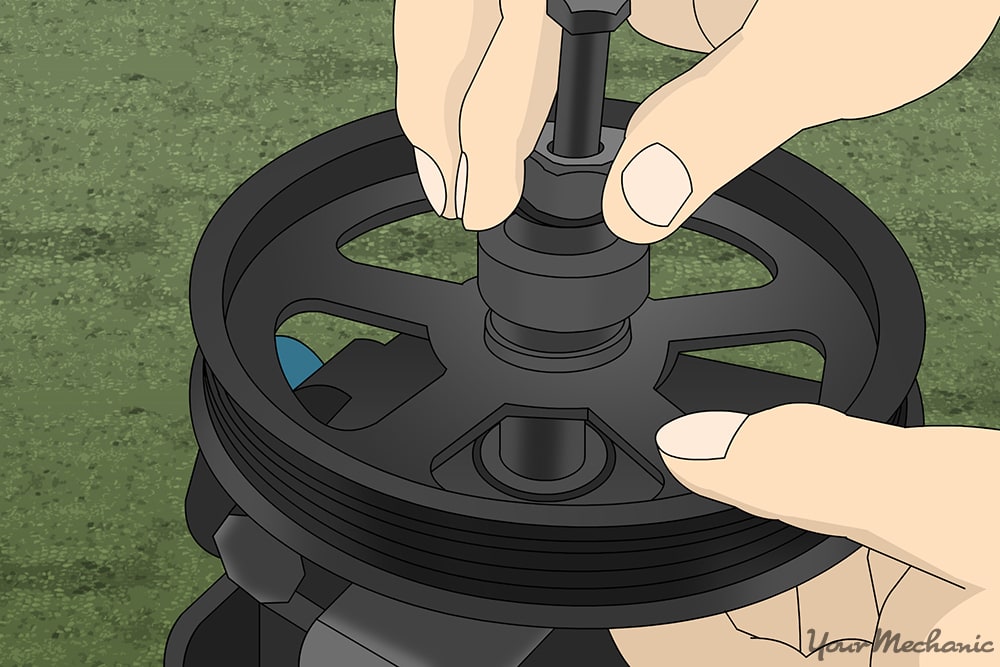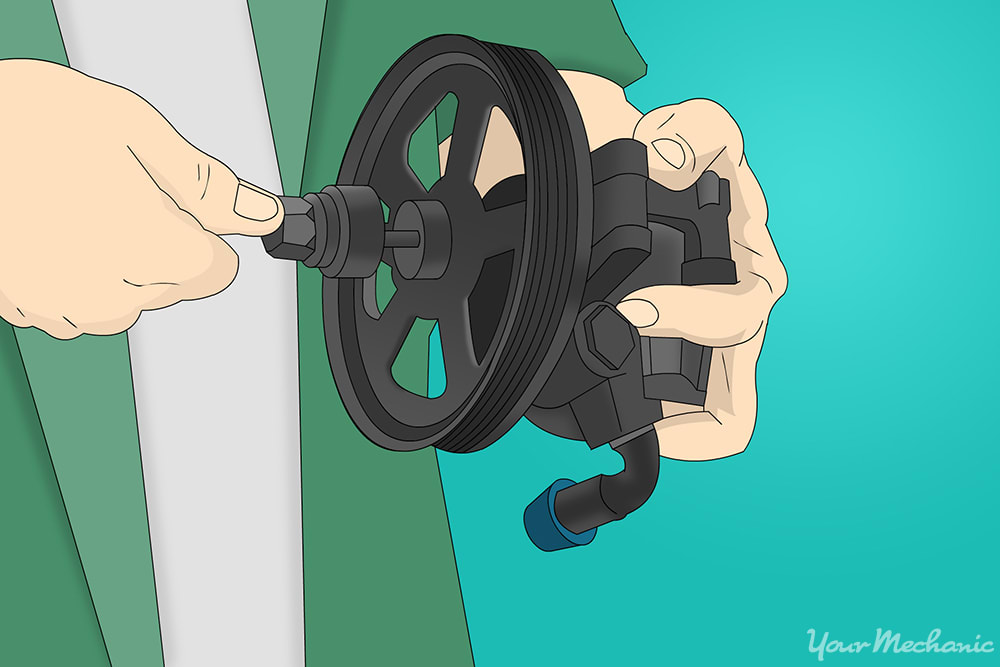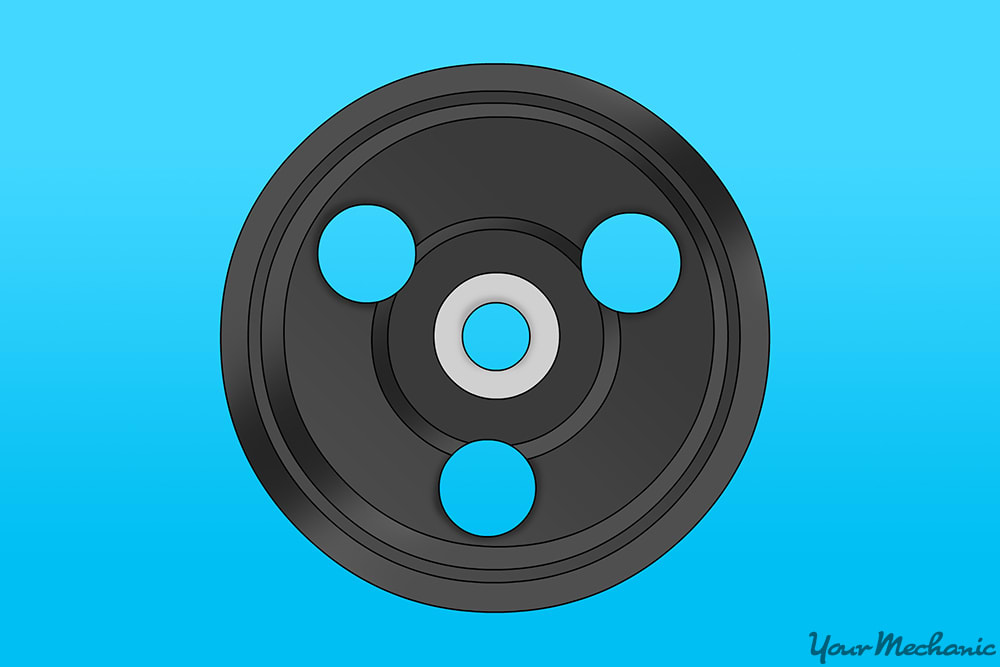

A hydraulic power steering pump is driven by a serpentine or drive belt that is attached to the power steering pump pulley. As the pulley is driven by this belt and begins to spin, it turns an input shaft inside the pump which creates pressure inside of the pump's housing. This pressure is applied to the hydraulic fluid inside the lines that connects the pump to the steering gear box. When the power steering pump pulley is wearing out or has broken, it may display a few common warning signs that indicate service is needed. You many notice a whining sound coming from the pump pulley, the power steering feeling tight when driving, or the pulley being damaged when a belt breaks.
Part 1 of 1: Replacing the power steering pump pulley
Materials Needed
- Boxed end wrench or ratchet wrench
- Hydraulic line wrenches
- Liquid containment drain pan
- Pulley removal tool
- Replacement power steering drive belt or serpentine belt
- Replacement power steering pulley
- Replacement power steering pump
- Safety equipment (safety glasses and plastic or rubber gloves)
Step 1: Disconnect the battery and lift the vehicle. Before removing any parts, locate the vehicle's battery and disconnect the positive and negative battery cables. This step should always be the first thing you do when you work on any vehicle. Lift the vehicle with a hydraulic lift or jacks and jack stands.
Step 2: Remove the engine cover and ancillary parts. With most vehicles, it is easy to gain access to the power steering pump pulley, but some require you to remove a few components, including the engine covers above and below the engine, the radiator fan shroud and radiator fan, the serpentine belt, and the alternator or AC unit.
Always refer to the vehicle's service manual for exact instructions on what you need to remove.
Step 3: Remove the serpentine belt or drive belt. To remove the serpentine belt, loosen the tensioner pulley that is located on the left side of the motor (as you're looking at the motor). Once the tensioner pulley is loose, you can slip the belt off rather easily. If your power steering pump is driven by the drive belt, you'll have to remove this belt as well.
Step 4: Remove the hydraulic lines leading into the power steering pump. Using a socket and ratchet or a line wrench, remove the hydraulic lines that are connected to the bottom of the power steering pump. This is usually the supply line that is connected to the gearbox. Make sure you place a drip pan under the vehicle before attempting this step as power steering fluid will drain.
After you've removed the bottom supply line, remove the other hydraulic lines often found on the top of the pump. These lines will include supply lines to the reservoir and return lines from the gear box.
Step 5: Remove the mounting bolts on the power steering pump bracket. Using an impact wrench or regular socket and ratchet, remove the bolts that hold the power steering pump onto the bracket or the engine block. Usually there are two or three bolts that need to be removed. Once this has been completed, remove the old pump and take it to a workbench for the next step.
Step 6: Remove the used power steering pump pulley. Once the power steering pump has been removed, you can remove the old pulley. In order to successfully remove the power steering pump pulley, you'll need to use the right tool. This is often referred to as a pulley removal unit.
First, place the power steering pump in a vice on a work bench. Attach the pulley removal tool to the pulley. Guide the locking nut onto the edge of the pulley. Using a socket and ratchet, slowly loosen the pulley while holding the pulley attachment nut with a corresponding end wrench.
This process is very slow, but necessary in order to correctly remove the power steering pulley. Continue loosening the pulley until the pulley has been removed from the power steering pump.
Step 7: Lubricate the input shaft. Apply lubricant on the pump and the inside of the pulley with extreme pressure lubricant. Anti-Seize is a good lubricant to use for this step.
Step 8: Install the new pulley onto the input shaft. Place the pulley onto the input shaft and install the pulley installation tool correctly on the input shaft and outside edge of the pulley. Always refer to the tool manufacturer's recommended steps.
Step 9: Tighten the pulley installation nut. Secure the pulley installation bolt in a workbench vice. Use the right sized end wrench to slowly tighten the pulley installation nut, making sure the pulley remains straight as you install it.
Step 10: Test the new pulley. Remove the tool and spin the pulley to make sure it is properly aligned and spins freely. You don't want to over-tighten the pulley, as it can cause damage to the back plate of the pump.
Step 11: Install the new power steering pump, pulley and belt. Anytime you install a new power steering pump and pulley, you need to install a new belt. The process for installing this unit is exactly opposite from the removal.
Secure the pump to the engine block by screwing bolts through the bracket to the block. Tighten bolts before proceeding to recommended torque pressure. Attach all hydraulic lines to the new power steering pump (including the bottom supply line).
Reinstall the new serpentine belt and drive belt (refer to your manufacturer’s service manual for proper installation procedures). Reinstall any other parts you had to remove initially in the opposite order you removed them.
Step 12: Reconnect the battery cables. Reconnect the positive and negative terminals to the battery.
Step 13: Fill and prime the power steering fluid. This is best completed by starting the engine while the front wheels are in the air. Once the vehicle has been started, turn the steering wheel to the left and right a few times.
Shut off the motor and refill the power steering fluid reservoir. Repeat this process until the power steering fluid reservoir does not require refilling.
Step 14: Test drive the vehicle. Start the vehicle first and inspect underneath for any leaks. A good road test of 10 to 15 miles is recommended. While on the road test, listen for any sounds coming from the front of the motor similar to any sounds you heard that led you to replace the power steering pump pulley. If the vehicle drives smoothly and you don't hear any sounds, the installation was completed correctly.
If you've read these instructions but don't feel 100% confident in completing this repair, please contact one of the local ASE certified mechanics from YourMechanic to complete the power steering pump pulley replacement for you.



